This season’s Allsvenskan has been exciting. While Djurgårdens IF, Malmö FF, IF Elfsborg and AIK Solna are fighting for the title, there are also teams working hard for a seat in Europe, such as Hammarby IF and IFK Norrkoping. As Jens Gustafsson departed to coach Hajduk Split, Peking appointed the experienced Rikard Norling, who won the Swedish top-tier football league twice with Malmö and AIK.
Intriguingly, the media often compared Norling with Gian Piero Gasperini as both favoured a back three formation. The 50-year-old head coach might be inspired by the Atalanta, but he also had his game ideas. It was not quite similar to the back three of Inter or Thomas Tuchel’s Chelsea Previously, Norling was criticized being too defensive as a coach, but after some time for a sabbatical, he had fresh ideas to work with Nörrkoping. This tactical analysis will explain the complex back three system of Norling’s Peking, and how his team evolved during the summer.
Rotations and the dynamic right wing-back
Many Allsvenskan teams played with a back three this season, but not many only stuck with this shape in every minute according to the data from Wyscout. In the first part of the analysis explains the tactics of Norling from spring to August.
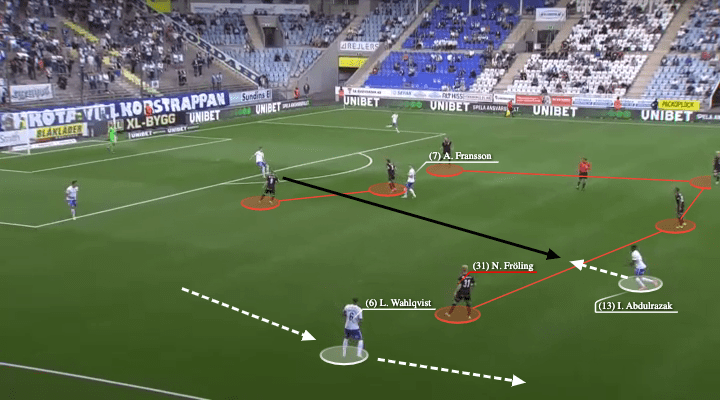
The obvious feature of Norling’s side was the dynamic positionings and movements of the right wing-back and right centre-back. In his early days, the right wing-back, Ishaq Abdulrazak would go into the centre to operate as a midfielder, and Linus Wahlqvist would come forward to play higher as a right-back (yes, we tried to interpret this rotation of Nörrkoping with terms in a back four).
We have many game examples from the Kalmar FF game to show their initial setups. As the opposition pressed in an asymmetrical 4-4-2, the job of Abdulrazak and Wahlqvist was to create a 2v1 overload on the left-winger. Given Kalmar’s left-back rarely stepped away from his position, Nörrkoping’s right side players used movements to create decisional dilemmas as our white arrows drawn.
When Wahlqvist moved forward, he drew Nils Fröling’s attention and brought him wider, opening spaces for Abdulrazak in the centre to receive.
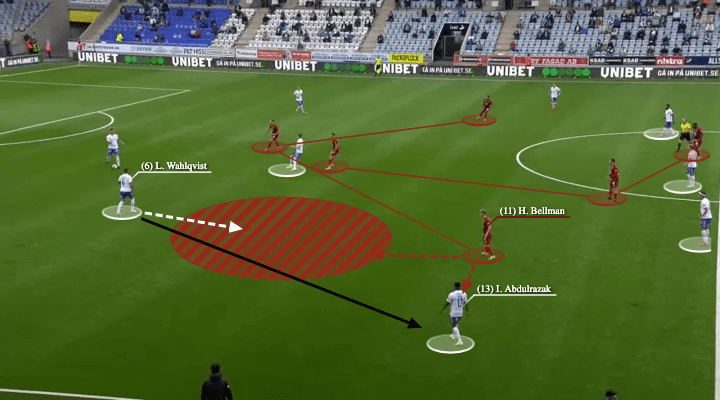
Against a 4-3-3, the dynamic space occupations of Nörrkoping also helped them to take the initiatives in the build-up. Firstly, we must look at the midfield distribution, as the attacking midfielders dropped to manipulate the second line of Östersunds FK. Then, they also had a midfielder to absorb pressure in the centre.
Nörrkoping were in a back three shape with Wahlqvist on the right side. As they drew Östersunds narrow, the half-spaces were vacated. When Wahlqvist received, he could drive forward to pose a question on Henrik Bellman. As the left-winger, Bellman was keeping an eye on the wing-back, so, should he step up to press the ball carrier? If he did, Abdulrazak was free, or if he did not, Wahlqvist can freely play a forward pass in the red space.
Alternatively, if Abdulrazak’s relatively wide position pulled Bellman away from the half-spaces, Wahlqvist could simply play a vertical ball to find the attacking midfielder, which was an even more direct way go forward.
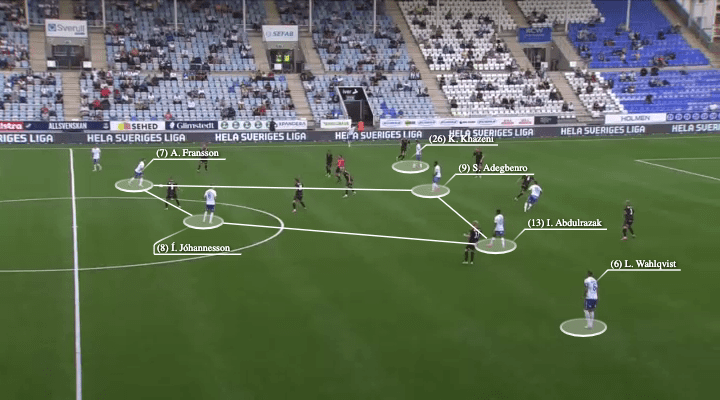
Another feature of Norling’s back three was the four-man midfield box. Although this was not a constant shape as players moved to search for better positions to help the team, the numerical advantage in the center often created spaces for the build-up players.
The image above shows the shape, Nörrkoping wanted to have double-occupation in each half-space. In this case, as the right wing-back, Abdulrazak went into the centre, he occupied the higher half-space with Samuel Adegbenro, while Alexander Fransson and Ísak Bergmann Jóhannesson served as the base.
From there, they allowed Kristoffer Khazeni to drift wider, as the 26-year-old attacker was more like a flank player in terms of style. On the right side, Wahlqvist was high to provide the width.
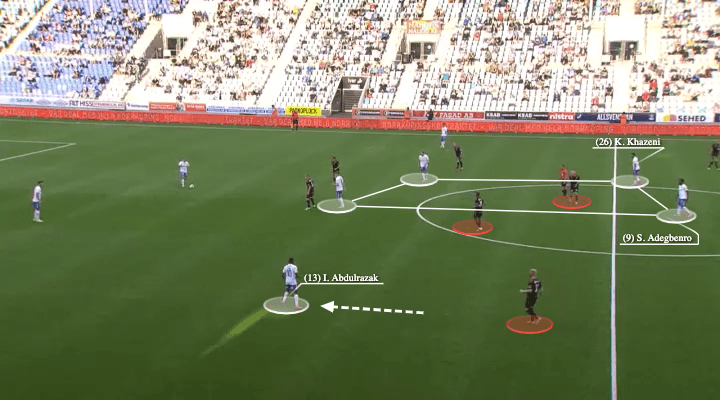
We will show more advantages of the four-man box via this example. This time, in a deeper area, Nörrkoping had Khazeni and Adegbenro in the centre. With these four players in the centre, they fixed the Kalmar defence and dragged them down. As the attacking midfielders pinned the Kalmar midfielders, and the strikers must be lower to cover two Peking midfielders, and so they would not press the centre-back.
Then, as separated the two Kalmar midfielders from the left-winger, Abdulrazak dropped to offer a half-spaces option for the centre-back. If Fröling pressed early, Nörrkoping could go diagonally to reach Wahlqvist at the point of offensive height.
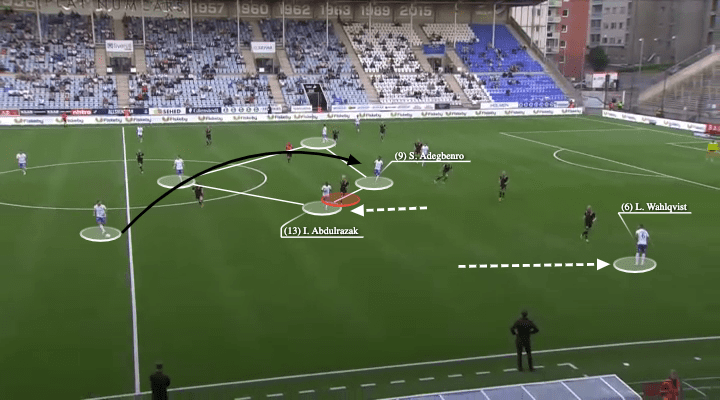
Nörrkoping were very aggressive to go into spaces between the lines, especially behind the opposition midfield. They wanted Adegbenro to move into that space, so Peking could reach their best man in the centre and let him does the rest.
Here, Henrik Castegren had the ball, there were two obvious passing options. Firstly, Wahlqvist made a forward run on the right side, he could be an option behind the last line. Meanwhile, Abdulrazak made a synchronized reversed movement to drag Fröling up, so there were spaces on the right side for a one-two.
But Norling’s troops were really interesting. Instead of going into half-space or sideways, Castegren lofted the ball to Adegbenro, who was behind the Kalmar midfield. Although it was an uneasy ball to control, the rest were Adegbenro’s quality as he has the quality to turn and run into the oppositions.
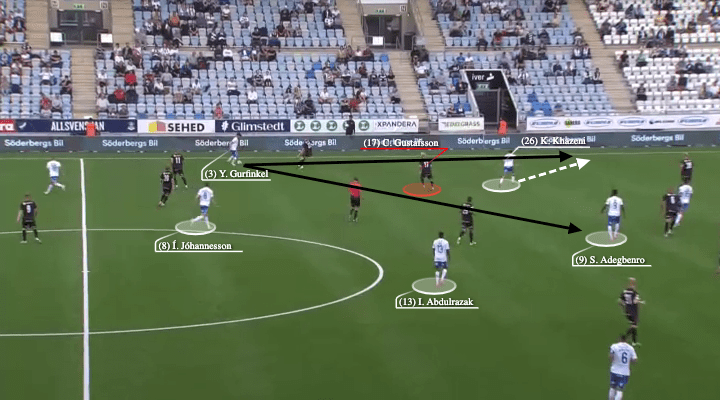
Although Nörrkoping rarely attacked on the left side, the box in the centre also generated dynamics when they go out on the flanks. In this example, you could see Khazeni moved from the left half-space to the wide zone, into spaces created by the left wing-back (Yahav Gurfinkel) as he pulled the right-back out.
From there, the movement of Khazeni was generated two options for the ball. The move posed a question to Carl Gustafsson, if he followed the run, Gurfinkel could go diagonally into Adegebenro. Or, if he did not track the run, Khazeni will be free to pull the centre-back out.
Evolution for more control
Nevertheless, as the season continued, Norling’s team has a very different structure to inject more energy, verticality, and intensity. Another reason for the change might be Abdulrazak was uncomfortable in the centre. As Jóhannesson departed, Norrkoping wanted more control in their game, so the system evolved to another stage.
The result of Peking was just average in the first half of the season. After losing to Halmstad BK, they were merely the 7th of the league. After the adjustments, Nörrkoping had a strong run with five wins and one draw in their next six games, they were much closer to the top-three.
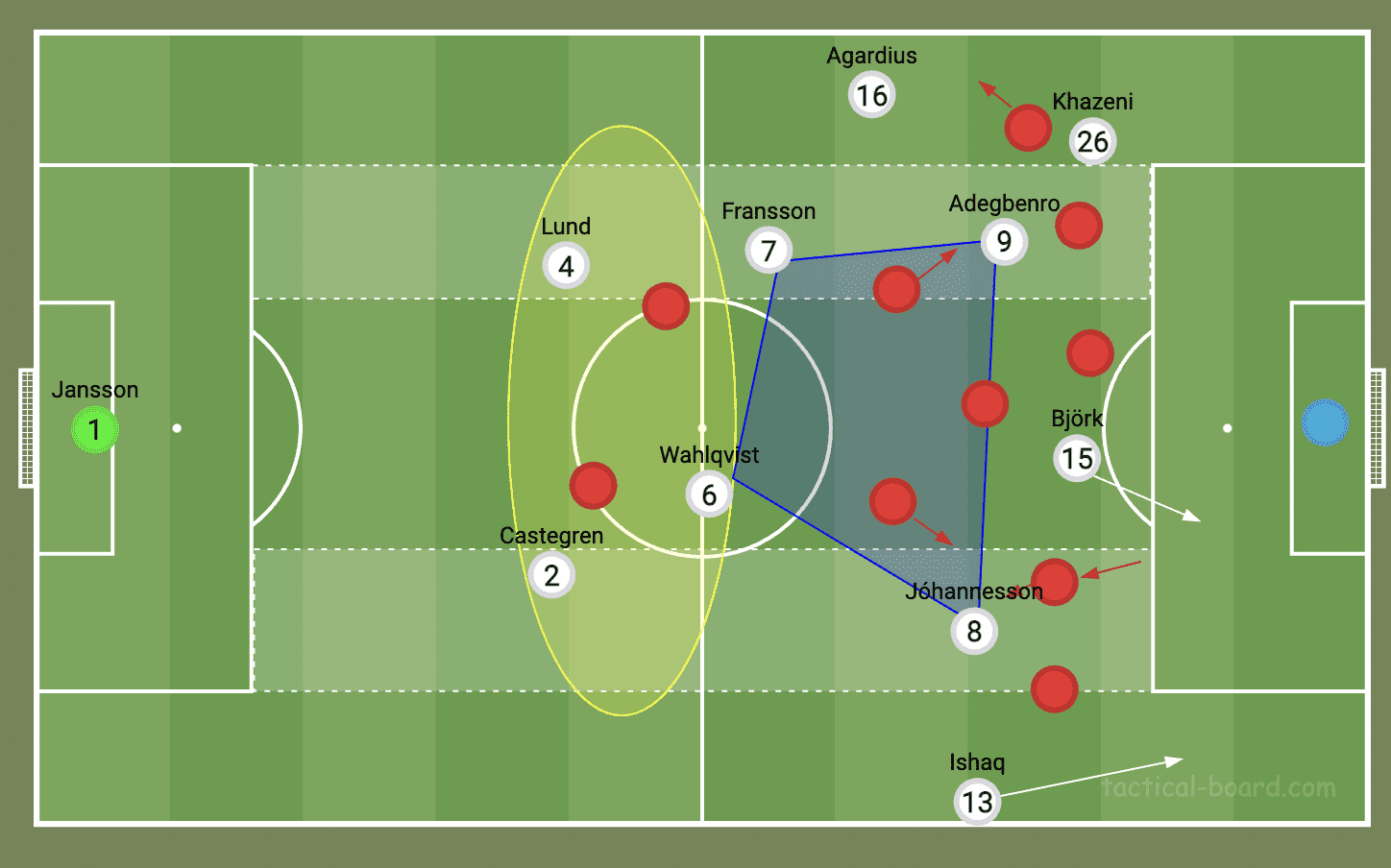
This was their game idea against Östersunds in their first clash. Abdulrazak became a more conventional right wing-back to make forward runs into spaces on the right side. In the first and second line, against a 5-3-2, Nörrkoping established a 4v2 or 3v2 numerical advantage with a 3-1, 2-1, or 2-2 shape.In the midfield, they form the box again but this time Wahlqvist was instructed to operate as a defensive midfielder. The four-man box created a 4v3 overload in the midfield, given the opposition centre-back were not aggssive to step up.
Occupying the higher and lower half-spaces simultaneously and constantly was the key. The shape either drag the Östersunds wide midfielders down, or create spaces for Fransson and Wahlqvist. If the wide centre-back pressed (e.g. on the Peking’s right side), the striker could go behind as the gap appeared.
Also, this shape allowed Khazeni to drift wider to operate as a left-winger, into spaces where he was more comfortable.
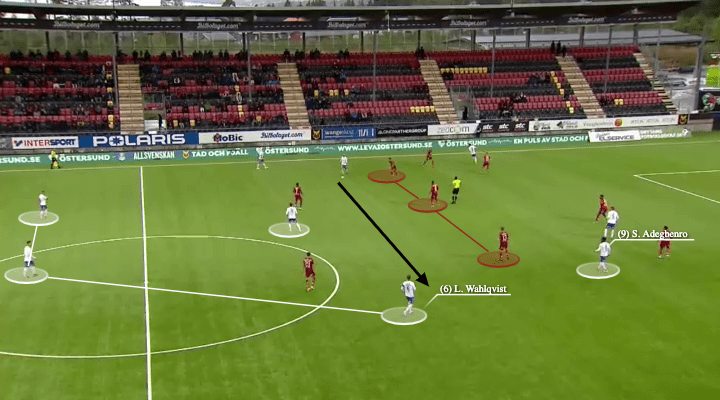
With this new structure, Nörrkoping successfully scored the winner after Sebastian Karlsson Grach levelled the score line. The above image shows the scenario before the goal, you could see the position of Wahlqvist. It was more like a 2-2 shape as he was in the midfield. With Fransson to fix the opposition midfield in the centre, Wahlqvist was free in the right half-space. Just one simple lateral pass allowed Nörrkoping to reach him.
Notice Ludvig Fritzson and Adegbenro’s positions. The Peking No.9 occupied the higher half-space to drag him down, creating more rooms for Wahlqvist.
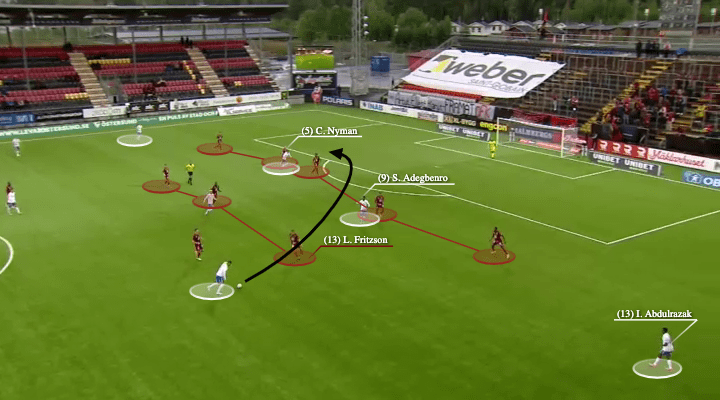
Then, Wahlqvist made good use of that area vacated by Adegbenro. As Fritzson was late to press, he was unable to block the angle of the long pass, which came from a slightly surprising angle. Then, Christoffer Nyman just sneaked into that gap to attack the blindside of the centre-back, guided the ball into the net with a classy header.
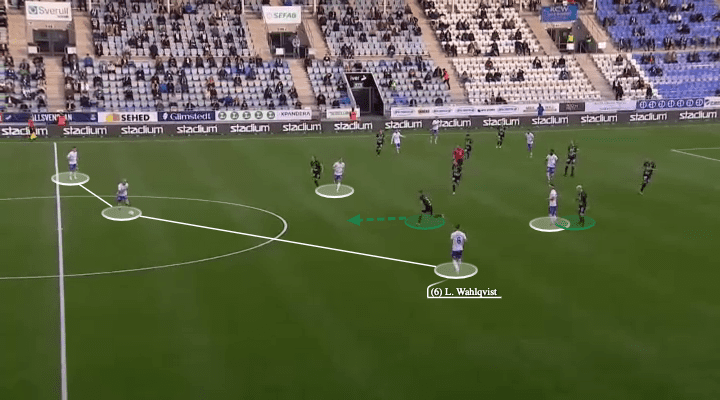
Some other goals of Nörrkoping also showed the features of their new system. In this one against Varberg BoIS, it was constructed from the second phase as well. Notice the high position of Wahlqvist, he moved to a parallel zone with Fransson. As the Varberg player in the centre tried to press Castegren, he was out of position and Wahlqvist was beyond him.
Again, same, the Varberg second line/midfielder could not jump onto Wahlqvist as Peking had higher half-spaces occupation to pin them. Meanwhile, the Abdulrazak must hold the width to stretch the defence and push the backline. These dynamic spaces occupations made sure Wahqlvist had the free spaces to cross.
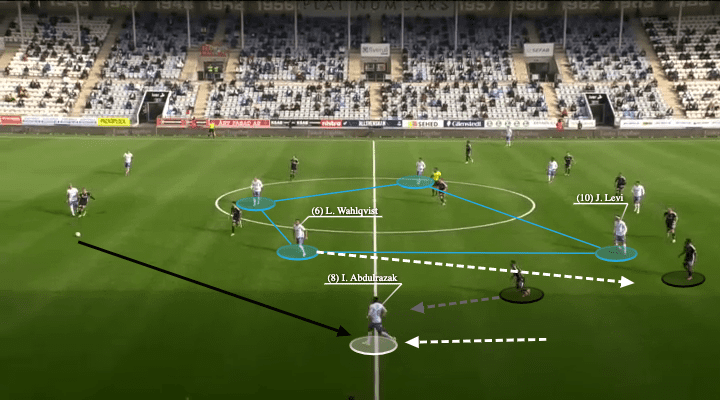
The goal against Örebro SK showed similar features, we also included the analysis of this one as it demonstrates the energy and intensity of the new structure. Firstly, the Peking had the four-man box, Abdulrazak wide, Wahlqvist in the centre as a midfielder.
But the key was Jonathan Levi’s position. The 25-year-old attacker drifted into the half-space and this position dragged the Örebro left-winger down, so the left-winger was late to press Abdulrazak. This allowed Castegren to reach the right wing-back with a simple diagonal.
When Wahlqvist saw the diagonal pass, he instantly speeded up to make a forward run through that half-space, all the way into spaces behind of the defence.
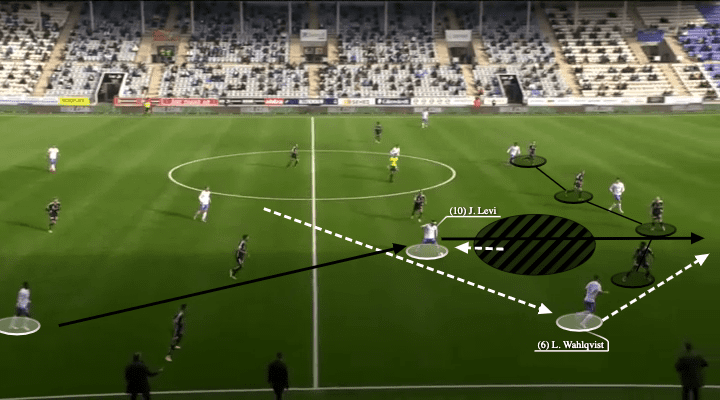
Then, they broke Örebro’s defensive structure. Abdulrazak twisted and further progressed by finding Levi in the half-space. You might wonder how the Örebro left-back let him to receive freely, and this was thanks to Wahlqvist’s run, which pushed the backline deep to allow Levi turn and accessed the black region.
The constant search of attacking depth was a feature of Norling’s Nörrkoping, and we will dissect with more examples in the next section.
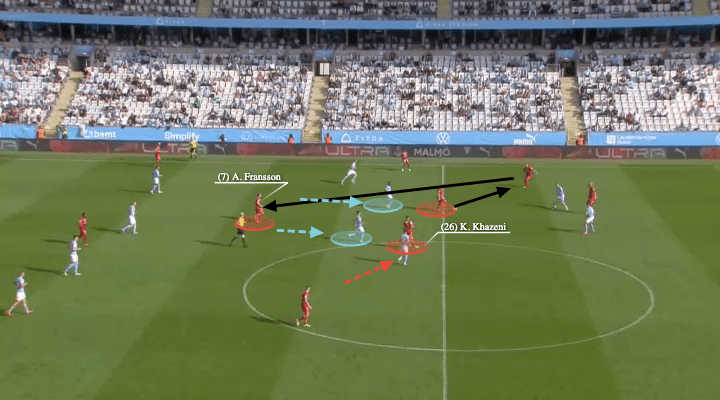
Although the shape has changed, Nörrkoping still used the four-man midfield to generate a numerical superiority in the centre, very simply they could overload three-man midfield such as the 4-3-3, 5-3-2, or 4-2-3-1 structure.
In the game against Malmö, they were more direct and vertical, but on some occasions the four-man midfield still helped them to break lines.
Here, with Khazeni intentionally moving into the deeper space, the two-man base of Nörrkoping dragged the two Malmö midfielders up. As a result, spaces behind the midfield were opened for Fransson to receive and turn.
Final third movements
After analyzing the dynamic midfield structure of Nörrkoping, we would then investigate their movements and behaviours in the final third. Some examples were from the same goals we mentioned previously.
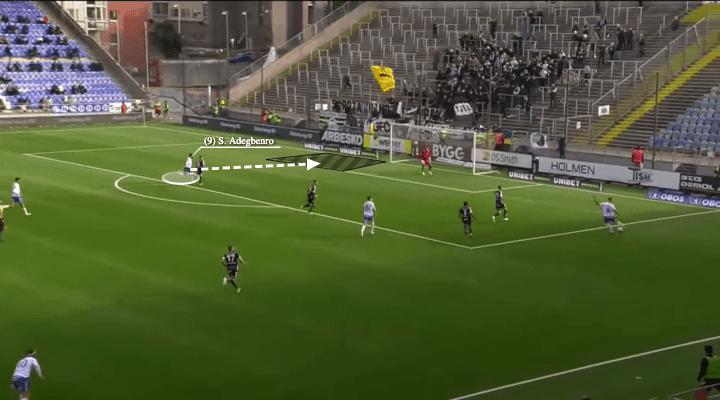
The first one was the goal against Örebro, from Abdulrazak to Levi, using the spaces created by Wahlqvist, they eventually reached the right centre-back on the right flank. Wahlqvist had great energy and pace to get behind of the left-back, and now he freed himself to cross.
On most occasions, Nörrkoping attackers will attack the far post, and the crosses should go there as well. The strikers just had to outrun the marker as Adegbenro here, attacking the black region, and to conver the simple tap-in.
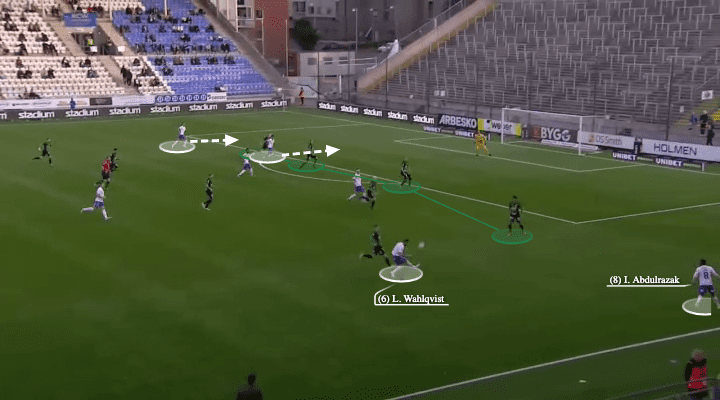
It was the same against Varberg. Wahlqvist was the crosser again. The opposition left-back could not press as Abdulrazak pushed him down. On the far side, two players were attacking the cross so the endpoint of the delivery must be there.
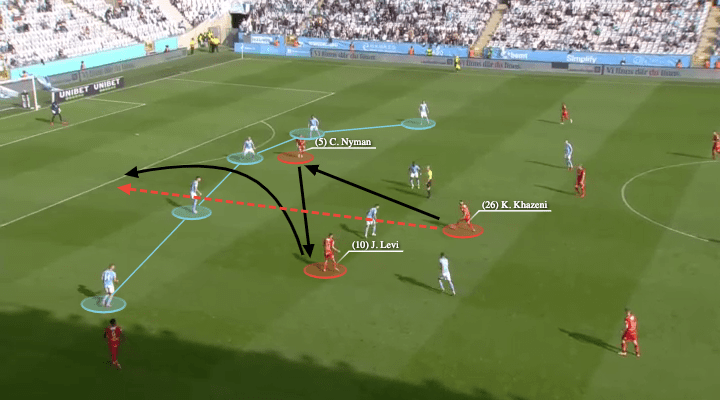
Apart from attacking the far side, another important concept was to run past the defensive line. Khazeni demonstrated very well in this example against Malmö. The 26-year-old midfielder initiated the attack by going to Nyman, then, Nörrkoping reached the third man (Levi). All Khazeni did was to continue the run from deep to go all the way, into spaces behind of the last line.
The run gave Levi a simple option to create a chance: scooping the ball past the last line, releasing Khazeni 1v1 against the goalkeeper.
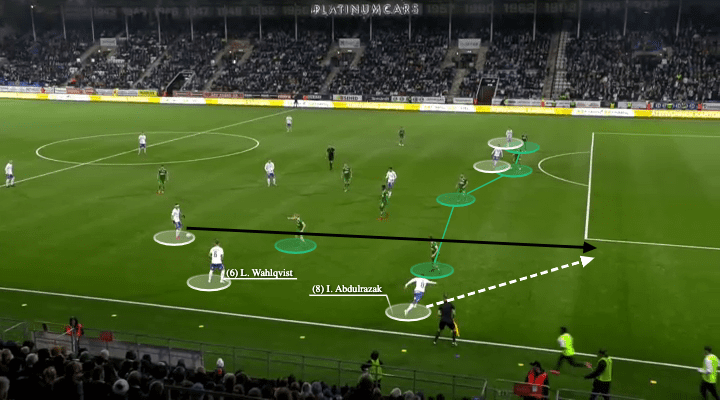
The second goal against Hammarby IF. When Miloš Milojević switched his side to a back four, you could see Abdulrazak was fresher. Even from a wider starting point, the run penetrated spaces behind, then, a simple cross helped them to regain the lead.
This time, Wahlqvist was in a wider position to open the half-spaces passing channel.
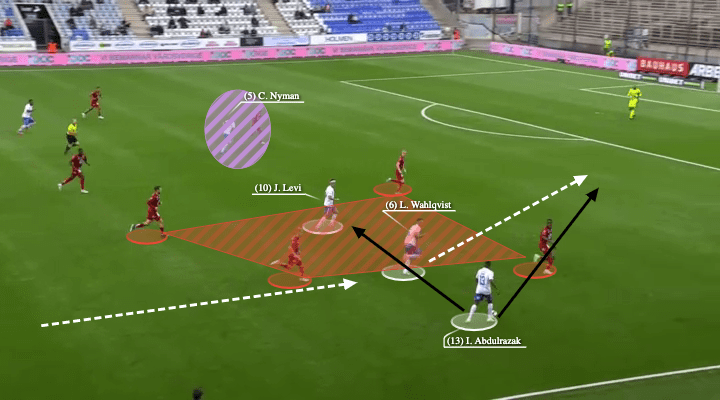
In this situation, the run was through the half-space by Wahlqvist. That sudden acceleration successfully outran the Östersunds second line. This gave Abdulrazak two options, and the solutions to counter-act. If the last line did not drop to cover the run, Wahlqvist could be found behind. Or, if the last line dropped, it opened the passing lane and space for Levi in front of the backline.
Another concept of Norling was to use the striker to occupy a centre-back. Then, it was easier to create separation and isolations among defenders. Nyman did this very well above and Eirik Haugan was isolated, if Haugan followed Wahlqvist, Nyman had a 1v1 against Noah Sonko Sundberg in the cross.
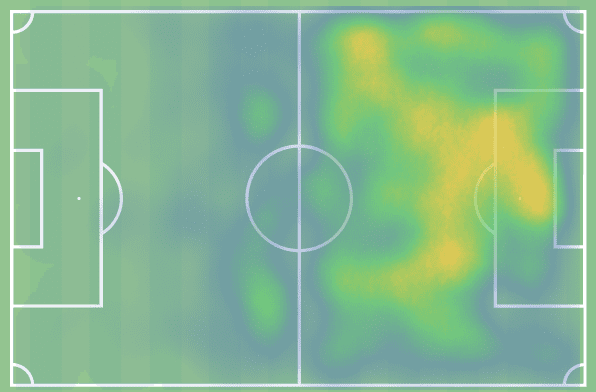
Adegbenro was literally everywhere in the attacking half. He has good adaptability to play as a winger, an attacking midfielder, or as a striker. More often he enjoyed drifting to the left side, using his physical superiority to take on the wide defenders, but he was also very good in spaces centrally as well. In addition, he has a very good mentality as many key goals were scored by Adegbenro this season.
Conclusion
Aside from the dynamic use of back three, Norling’s Nörrkoping also had other great things this season, such as their strong defensive set-plays performance. They might not be at their best this season, but it would be interesting to see whether Norling could build a team that challenges the gold next season, if key players such as Adegbenro and Fransson stayed.





Comments